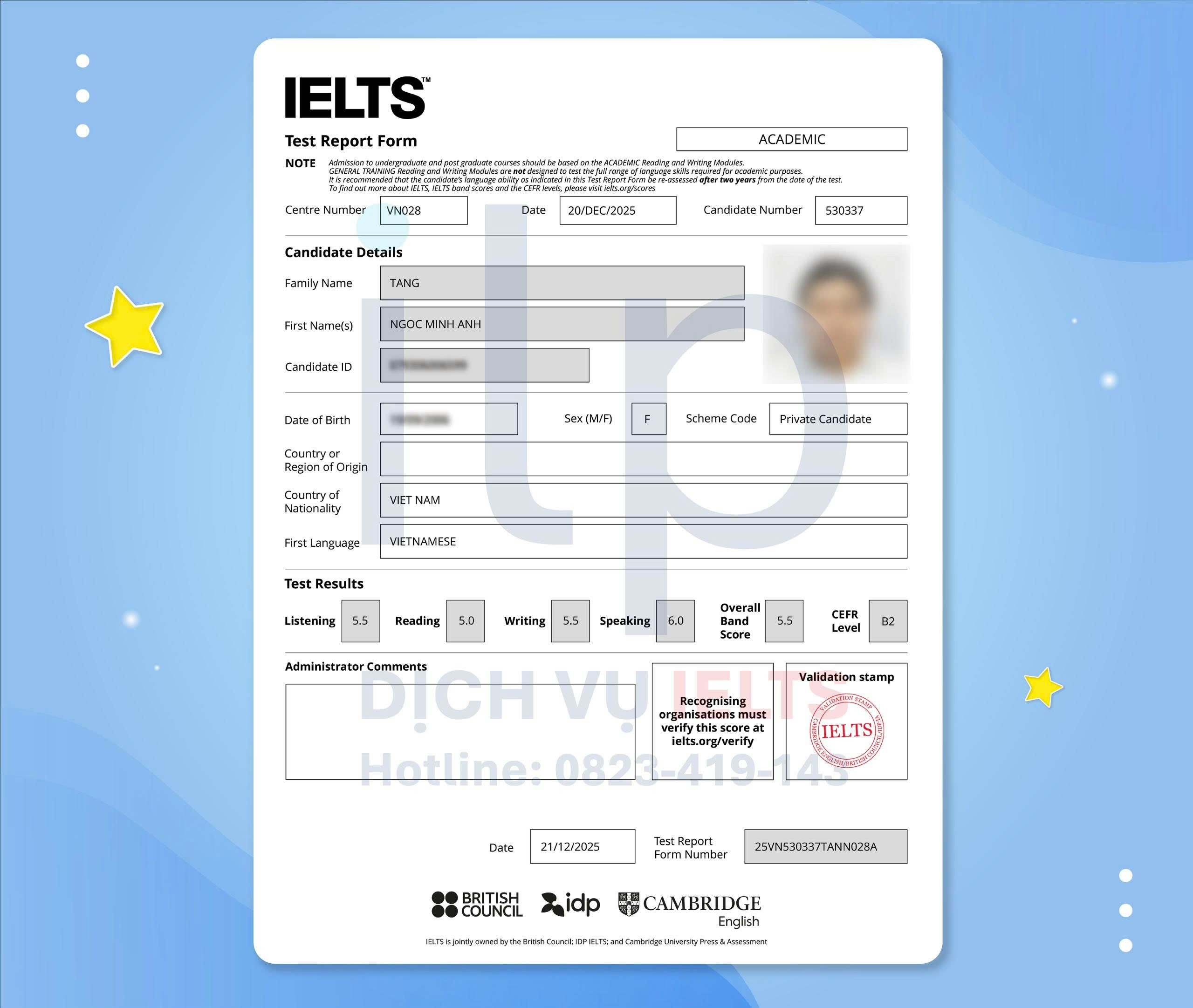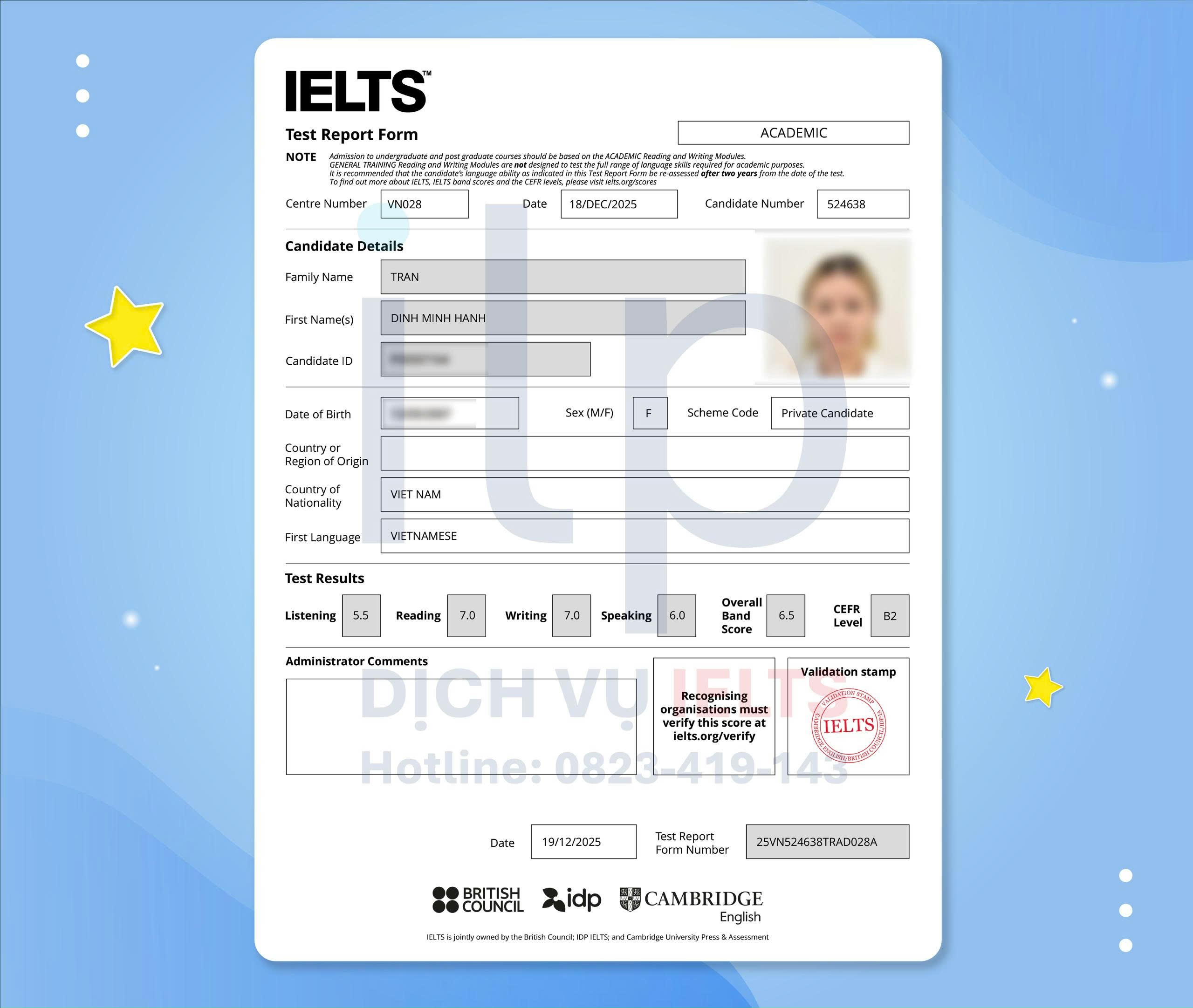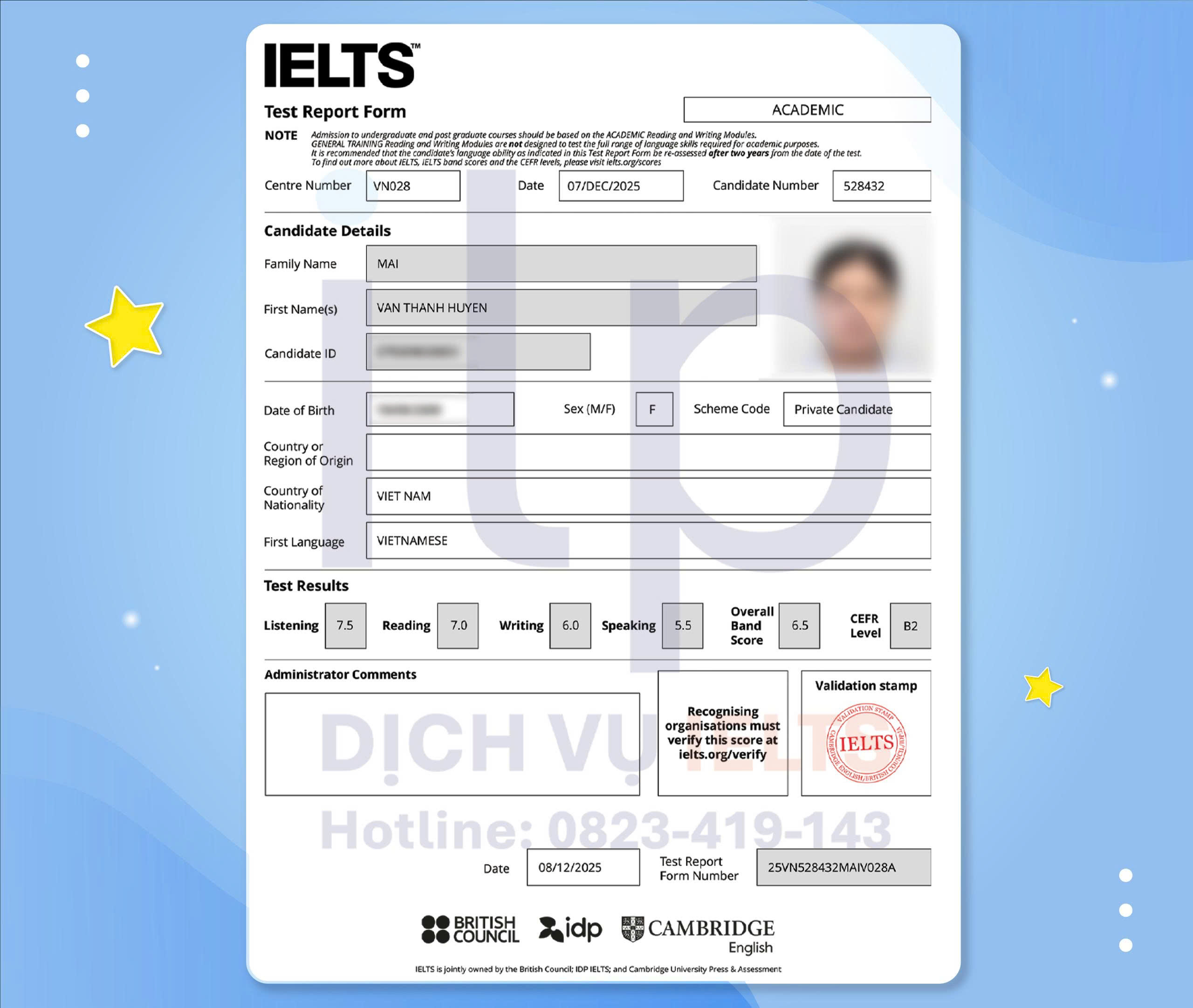HƯỚNG DẪN GIẢI CHI TIẾT LISTENING TEST 1 – CAMBRIDGE IELTS 17

Cùng luyện tập kỹ năng nghe qua bài Listening Test 1 – Cambridge IELTS 17 để hiểu thêm về cấu trúc đề thi và nắm bắt một số kỹ thuật giúp bạn chinh phục kỹ năng này dễ dàng hơn.
Cambridge IELTS được thiết kế theo cấu trúc của đề thi thật IELTS. Luyện tập những đề bài trong tài liệu này giúp người học có những kỹ năng xử lý tình huống cần thiết khi đối diện với bài thi IELTS.
REVIEW CHI TIẾT BỘ SÁCH CAMBRIDGE IELTS 1-16
HƯỚNG DẪN GIẢI CHI TIẾT READING TEST 1: PASSAGE 1 – CAMBRIDGE IELTS 17
Đề thi IELTS Cambridge 7 – Listening Test 1
TẢI FULL ĐỀ LISTENING TEST 1 – CAMBRIDGE IELT 7 TẠI ĐÂY.
Link nghe: Audio
|
PART 1 Questions 1 – 10 Complete the notes below. Write ONE WORD AND/OR A NUMBER for each answer. Buckworth Conservation Group Regular activities Beach ● making sure the beach does not have 1 …………………… on it ● no 2 …………………… Nature reserve ● maintaining paths ● nesting boxes for birds installed ● next task is taking action to attract 3 …………………… to the place ● identifying types of 4 …………………… ● building a new 5 …………………… Forthcoming events Saturday ● meet at Dunsmore Beach car park ● walk across the sands and reach the 6 …………………… ● take a picnic ● wear appropriate 7 …………………… Woodwork session ● suitable for 8 …………………… to participate in ● making 9 …………………… out of wood ● 17th, from 10 a.m. to 3 p.m. ● cost of session (no camping): 10 £ …………………… PART 2 Questions 11 – 14 Choose the correct letter, A, B or C Boat trip around Tasmania 11 What is the maximum number of people who can stand on each side of the boat? A 9 B 15 C 18 12 What colour are the tour boats? A dark red B jet black C light green 13 Which lunchbox is suitable for someone who doesn’t eat meat or fish? A Lunchbox 1 B Lunch box 2 C Lunch box 3 14 What should people do with their litter? A take it home B hand it to a member of staff C put it in the bins provided on the boat Questions 15 and 16 Choose TWO letters, A-E Which TWO features of the lighthouse does Lou mention? A why it was built B who built it C how long it took to build D who staffed it E what it was built with Questions 17 and 18 Choose TWO letters, A-E Which TWO types of creature might come close to the boat? A sea eagles B fur seals C dolphins D whales E penguins Questions 19 and 20 Choose TWO letters, A-E Which TWO points does Lou make about the caves? A Only large tourist boats can visit them. B The entrances to them are often blocked. C It is too dangerous for individuals to go near them. D Someone will explain what is inside them. E They cannot be reached on foot. PART 3 Questions 21-26 Choose the correct letter, A, B or C Work experience for veterinary science students 21 What problem did both Diana and Tim have when arranging their work experience? A make initial contact with suitable farms B organising transport to and from the farm C finding a placement for the required length of time 22 Tim was pleased to be able to help A a lamb that had a broken leg. B a sheep that was having difficult giving birth. C a newly born lamb that was having trouble feeding. 23 Diana says the sheep on her farm A were of various different varieties. B were mainly reared for their meat. C had better quality wool than sheep on the hills. 24 What did the students learn about adding supplements to chicken feed? A These should only be given if specially needed. B It is worth paying extra for the most effective ones. C The amount given at one time should be limited. 25 What happened when Diana was working with dairy cows? A She identified some cows incorrectly. B She accidentally threw some milk away. C She made a mistake when storing milk. 26 What did both farmers mention about vets and farming? A Vets are failing to cope with some aspects of animal health. B There needs to be a fundamental change in the training of vets. C Some jobs could be done by the farmer rather than by a vet. Questions 27-30 What opinion do the students give about each of the following modules on their veterinary science course? Choose FOUR answers from the box and write the correct letter, A-F, next to questions 27-30. Opinions
Modules on Veterinary Science course 27 Medical terminology …………………. 28 Diet and nutrition …………………. 29 Animal disease …………………. 30 Wildlife medication …………………. PART 4 Questions 31 – 40 Complete the notes below. Write ONE WORD ONLY for each answer. Labyrinths Definition ● a winding spiral path leading to a central area Labyrinths compared with mazes ● Mazes are a type of 31 …………………… – 32 …………………… is needed to navigate through a maze – the word ‘maze’ is derived from a word meaning a feeling of 33 …………………… ● Labyrinths represent a journey through life – they have frequently been used in 34 …………………… and prayer Early examples of the labyrinth spiral ● Ancient carvings on 35 …………………… have been found across many cultures ● The Pima, a Native American tribe, wove the symbol on baskets ● Ancient Greeks used the symbol on 36 …………………… Walking labyrinths ● The largest surviving example of a turf labyrinth once had a big 37 …………………… at its centre Labyrinths nowadays ● Believed to have a beneficial impact on mental and physical health, e.g., walking a maze can reduce a person’s 38 …………………… rate ● Used in medical and health and fitness settings and also prisons ● Popular with patients, visitors and staff in hospitals – patients who can’t walk can use ‘finger labyrinths’ made from 39 …………………… – research has shown that Alzheimer’s sufferers experience less 40…………………… (Cambridge IELTS 17 Listening test 1) |
Đáp án và hướng dẫn giải chi tiết Listening Test 1
|
Question |
Dữ liệu tìm kiếm đáp án |
|
making sure the beach does not have (1) …………………… on it (từ cần điền là danh từ, một vật không nên có trên bãi biển) Đáp án: litter |
One of the regular ones is trying to keep the beach free of litter (Q1). free of … = do not have … on it |
|
no (2) …………………… Đáp án: dogs |
JAN: I totally agree. I’d be happy to help with that. Is it OK to take dogs (Q2)? PETER: I’m afraid not, as they’re banned from the beach itself. |
|
next task is taking action to attract (3) …………………… to the place Đáp án: insects |
Next we’re going to work on encouraging insects (Q3). |
|
identifying types of (4) …………………… Đáp án: butterflies |
Oh, and we’re also running a project to identify the different species of butterflies (Q4) that visit the reserve. Ở đây species đã được paraphrase lại thành types. |
|
building a new (5) …………………… Đáp án: wall |
Another job we’re doing at the reserve is replacing the wall (Q5) on the southern side. Replacing đã được paraphrase lại thành building a new. |
|
walk across the sands and reach the (6) …………………… Đáp án: island |
We’ll be meeting in the car park at Dunsmore Beach at low tide – that’s when the sands are dry enough for us to walk to the island (Q6) without getting wet. |
|
wear appropriate (7) …………………… Đáp án: boots |
And of course it’ll be wet walking across and back, so make sure your boots (Q7) are waterproof. |
|
suitable for (8) …………………… to participate in Đáp án: beginners |
JAN: I’ve never tried that before. Is it OK for beginners (Q8) to take part? PETER: Definitely. take part = participate in |
|
making (9) …………………… out of wood Đáp án: spoons |
You’ll be starting with wooden spoons (Q9), and of course learning how to use the tools. wooden spoons = spoon out of wood |
|
cost of session (no camping): (10) £…………………… Đáp án: 35/ thirty five |
There’s a charge of £35 (Q10), including lunch, or £40 if you want to camp in the wood. |
|
11. What is the maximum number of people who can stand on each side of the boat? A 9 B 15 C 18 Đáp án: A |
But please note if there are more than nine people on either side of the boat, we’ll move some of you over (Q11), otherwise all eighteen of us will end up in the sea! |
|
12. What colour are the tour boats? A dark red B jet black C light green Đáp án: C |
They used to be jet black, but our new ones now have these comfortable dark red seats and a light-green exterior (Q12) in order to stand out from others and help promote our company. |
|
13. Which lunchbox is suitable for someone who doesn’t eat meat or fish? A Lunchbox 1 B Lunch box 2 C Lunch box 3 Đáp án: |
Lunchbox 2 contains a cheddar cheese roll (Q13) and Lunchbox 3 is salad-based and also contains eggs and tuna. |
|
14. What should people do with their litter? A take it home B hand it to a member of staff C put it in the bins provided on the boat Đáp án: B |
We don’t have any bins to put litter in, but Jess, myself or Ray, our other guide, will collect it from you (Q14) after lunch and put it all in a large plastic sack. |
|
15 & 16. Which TWO features of the lighthouse does Lou mention? A why it was built B who built it C how long it took to build D who staffed it E what it was built with Đáp án: A&D |
This area is famous for its ancient lighthouse, which you’ll see from the boat as we turn past the first little island. It was built in 1838 to protect sailors as a number of shipwrecks had led to significant loss of life (Q15/16). In the nineteenth century there were many jobs there, such as polishing the brass lamps, chopping firewood and cleaning windows, that kept lighthouse keepers busy. These workers were mainly prison convicts until the middle of that century (Q15/16). |
|
17 & 18. Which TWO types of creature might come close to the boat? A sea eagles B fur seals C dolphins D whales E penguins Đáp án: B&C |
When we get to the rocky area inhabited by fur seals, […]. They’re inquisitive creatures so don’t be surprised if one pops up right in front of you (Q17/18). Dolphins, on the other hand, can sometimes approach on their own or in groups as they ride the waves beside us. (Q17/18) |
|
19 & 20. Which TWO points does Lou make about the caves? A Only large tourist boats can visit them. B The entrances to them are often blocked. C It is too dangerous for individuals to go near them. D Someone will explain what is inside them. E They cannot be reached on foot. Đáp án: D&E |
They can only be approached by sea (Q19/20) What we’ll do is to go through a narrow channel, past some incredible rock formations and from there we’ll be able to see the openings to the caves, and at that point we’ll talk to you about what lies beyond. (Q19/20) |
|
21. What problem did both Diana and Tim have when arranging their work experience? A make initial contact with suitable farms B organising transport to and from the farm C finding a placement for the required length of time Đáp án: A |
DIANA: […] But finding the right sort of farm to apply to wasn’t easy. TIM: […] I found mine through a friend of my mother’s, but it wasn’t easy. |
|
22. Tim was pleased to be able to help A a lamb that had a broken leg. B a sheep that was having difficult giving birth. C a newly born lamb that was having trouble feeding. Đáp án: B |
TIM: I was up most of one night helping a sheep deliver a lamb … TIM: It wasn’t a straightforward birth, but I managed. |
|
23. Diana says the sheep on her farm A were of various different varieties. B were mainly reared for their meat. C had better quality wool than sheep on the hills. Đáp án: B |
TIM: So were they bred for their meat? DIANA: Mostly, yes. |
|
24. What did the students learn about adding supplements to chicken feed? A These should only be given if specially needed. B It is worth paying extra for the most effective ones. C The amount given at one time should be limited. Đáp án: A |
TIM: I was interested in the amount of supplements they add to animals’ feed nowadays. DIANA: […] And he didn’t give them as a matter of routine, just at times when the chickens seemed to particularly require them. (Q24) TIM: Yes, mine said the same. |
|
25. What happened when Diana was working with dairy cows? A She identified some cows incorrectly. B She accidentally threw some milk away. C She made a mistake when storing milk. Đáp án: C |
DIANA: I got mixed up, and I poured some milk from the wrong cow in with the milk for humans, so the whole lot had to be thrown away (Q25) |
|
26. What did both farmers mention about vets and farming? A Vets are failing to cope with some aspects of animal health. B There needs to be a fundamental change in the training of vets. C Some jobs could be done by the farmer rather than by a vet. Đáp án: C |
TIM: I asked my farmer how much he depended on the vet to deal with health problems. […] he said that actually some of the stuff the vets do, like minor operations, he’d be quite capable of doing himself. (Q26) |
|
27. Medical terminology …………………. Đáp án: A. Tim found this easier than expected. |
TIM: I’d thought it’d be hard, but actually I found it all quite straightforward. |
|
28. Diet and nutrition …………………. Đáp án: E. Tim was shocked at something he learned on this module. |
TIM: Do you remember what they told us about pet food and the fact that there’s such limited checking into whether or not it’s contaminated? I mean in comparison with the checks on food for humans – I thought that was terrible. |
|
29. Animal disease …………………. Đáp án: F. They were both surprised how little is known about some aspects of this. |
DIANA: The economies of so many countries depend on these, but scientists don’t know much about the diseases that affect them. TIM: Yes, I thought they’d know a lot about ways of controlling and eradicating those diseases, but that’s not the case at all. |
|
30. Wildlife medication …………………. Đáp án: C. Diana may do some further study on this. |
DIANA: Yeah, I thought I might write my dissertation on something connected with that. |
|
31. Mazes are a type of (31) ……………… Đáp án: puzzle |
A maze is quite different as it is a kind of puzzle with an intricate network of paths. |
|
(32) …………………… is needed to navigate through a maze Đáp án: pattern |
Entering a maze usually involves getting lost a few times before using logic to work out the pattern and find your way to the centre and then out again. |
|
the word ‘maze’ is derived from a word meaning a feeling of (33) …………………… Đáp án: confusion |
The word ‘maze’ is believed to come from a Scandinavian word for a state of confusion. |
|
they have frequently been used in (34) …………………… and prayer Đáp án: meditation |
Labyrinths are thought to encourage a feeling of calm and have been used as a meditation and prayer tool in many cultures over many centuries. |
|
Ancient carvings on (35) …………………… have been found across many cultures Đáp án: stone |
The earliest examples of the labyrinth spiral pattern have been found carved into stone. |
|
Ancient Greeks used the symbol on (36) …………………… Đáp án: coins |
In Ancient Greece, the labyrinth spiral was used on coins around four thousand years ago. |
|
The largest surviving example of a turf labyrinth once had a big (37) ……………… at its centre Đáp án: tree |
Eleven examples of turf labyrinths survive today, including the largest one at Saffron Walden, England, which used to have a large tree in the middle of it. |
|
Believed to have a beneficial impact on mental and physical health, e.g., walking a maze can reduce a person’s (38) …………… rate Đáp án: breathing |
There are those who believe in its emotional and physical benefits, which include slower breathing and a restored sense of balance and perspective. |
|
patients who can’t walk can use ‘finger labyrinths’ made from (39) …………………… Đáp án: paper |
In some hospitals, patients who can’t walk can have a paper ‘finger labyrinth’ brought to their bed. |
|
research has shown that Alzheimer’s sufferers experience less (40) …………………… Đáp án: anxiety |
For example, one study found that walking a labyrinth provided ‘short-term calming, relaxation, and relief from anxiety’ for Alzheimer’s patients. |
Bùi Thị Kim Yến
Nâng band điểm IELTS Listening cùng Đội ngũ Học thuật ILP:
TIPS LÀM IELTS LISTENING: DỰ ĐOÁN CÂU TRẢ LỜI
BÍ QUYẾT GỠ RỐI DẠNG MAP IELTS LISTENING
VƯỢT QUA NỖI LO IELTS LISTENING – TỰ TIN NÂNG CAO KỸ NĂNG NGHE




